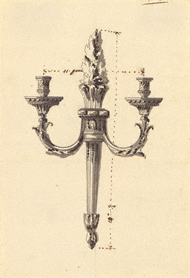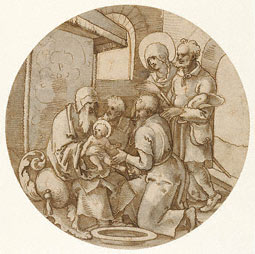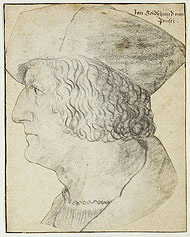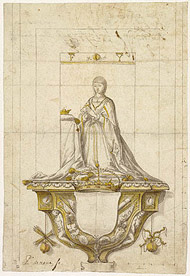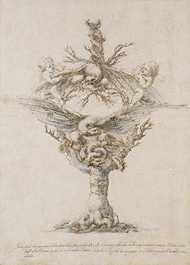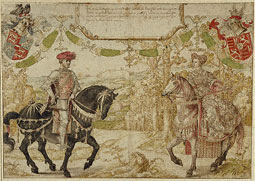| Education | ||
| Exhibitions | ||
| Explore Art | ||
| Research and Conservation | ||
| Bookstore | ||
| Games | ||
| About the J. Paul Getty Museum | ||
| Public Programs | ||
Press Kit |
||
| Museum Home
|
March 31–July 5, 2009 at the Getty Center
This exhibition features designs for three-dimensional objects such as stained glass, small-scale metalwork, sculpture, architecture, tableware, tapestry, and the decorative arts. |
|||||||||||||
Stained Glass Several steps were involved in making stained glass. After an artist drew the overall composition, a glass painter painted the design onto pieces of clear and colored glass. |
|||||||||||||
Small-Scale Metalwork Portrait medals developed as an independent art form in the Renaissance. From 1518 to 1520, Hans Schwarz made more than a hundred preparatory drawings for portrait medals, including this one of Anton Rem, a wealthy citizen of Augsburg, Germany. Schwarz had a gift for capturing a sitter's unique physical characteristics in a simple profile bust. |
|||||||||||||
Sculpture and Architecture Queen Isabella of Spain kneels before an altar in this study for a wood sculpture that still stands in the main chapel of the cathedral in Granada, Spain. The lower right and bottom right edges are marked for scale in varas, an old Spanish unit of measure equal to 33 inches. |
|||||||||||||
Tableware Elaborate glass table ornaments were common at the Medici court in Florence. The artist's inscription at the bottom of this drawing explains the function of the glass: white wine should be poured into one tube and red wine into the other, so that the red wine fills the eagles and snakes, and the white wine fills the rest. Delicate blue wash evokes the presence of liquid inside a transparent shell. |
|||||||||||||
Tapestry This drawing is one of seven designs for a set of tapestries, now lost, depicting the genealogy of the house of Orange-Nassau, a branch of the Dutch royal family. |
|||||||||||||
|
|
|||||||||||
